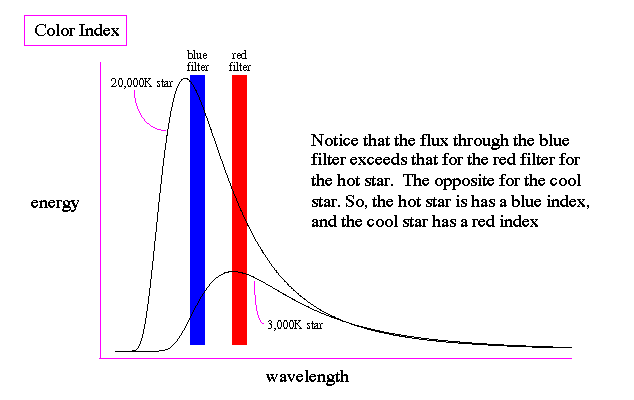

Color Index:
The color index of a star is the difference between two measurements of the magnitude (brightness on a logarithmic scale) of a star made at different wavelengths, the value found at the longer wavelength being subtracted from that found at the shorter. Usually the two wavelengths are the blue, measured from ordinary photographic plates that are most sensitive to blue light, and the visual, measured on photographic plates sensitized to yellow. The index is a measure of a star's color, an indication of its temperature, and a fairly crude description of the distribution of its radiated energy through the electromagnetic spectrum. Hot, blue stars have negative color indices, as they radiate most strongly and therefore have numerically lower magnitudes at short wavelengths, and those of cool, red stars are positive. The color index of a star is increased by the passage of its light through interstellar matter; the amount by which it exceeds the normal value for its spectral type is called the color excess.
Excerpt from the Encyclopedia Britannica without permission.